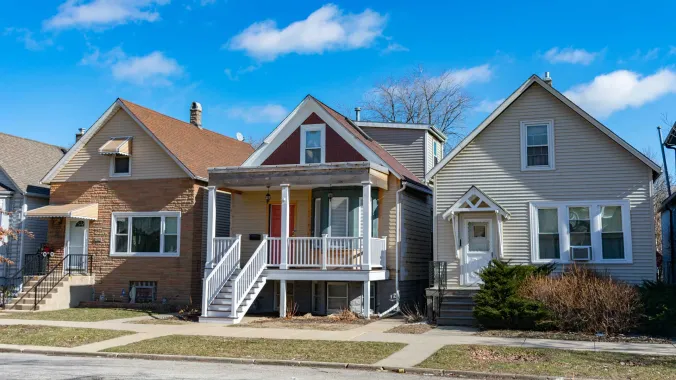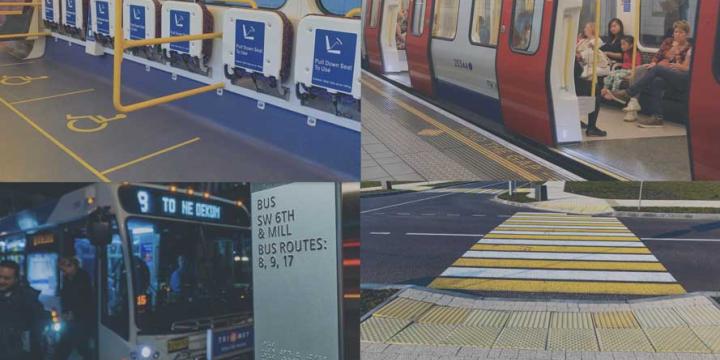Course Info
7 video lessons (56 Mins)
Published
2023-
4.45
Preview Course
Browse Course Chapters
-
1.Introduction
2 mins
-
2.Setting the Stage: A Quick Summary of Suburban Remix
9 mins
-
3.Poverty and Diversity Move to the Suburbs
6 mins
-
4.The Unique Challenges of Suburban Poverty
8 mins
-
5.Strategies for Building More Equitable and Inclusive Suburbs Part I
9 mins
-
6.Strategies for Building More Equitable and Inclusive Suburbs Part II
20 mins
-
7.Conclusion
1 min
What You Will Learn
- Understand how accelerating demographic, economic, social, mobility, and environmental forces are coming together to create a perfect storm of displacement that is increasingly amenitizing urban cores and in the process displacing poverty from central cities to suburbs, particularly suburbs furthest from the urban core.
- Understand why, as they compete for talent to build innovation economies, cities and regions cannot afford to take steps to pause or reverse this process.
- How to empower planners, local officials, community leaders, and their peers with the perspective and data to facilitate important community. conversations around changing suburbs and the growth of poverty and diversity.
- Learn about the increased challenges faced by the suburban poor related to mobility, housing, health, and similar issues.
- Learn more about the strategies suburbs can employ to create 1) mixed-income neighborhoods—in place of socially isolated affordable housing—representing more “complete” communities, 2) workforce readiness programs that help move people out of intergenerational poverty, 3) skills training to provide access to jobs that provide ladders of opportunity, and 4) plans and policies that design and create a public realm that creates common ground.
- Determine how suburbs can partner with each other and regional planning organizations to more effectively address all of these issues.
Course Description
Suburbs are taking center stage in America’s struggle to achieve equity and inclusivity. Urban cores are increasingly white and affluent, while poverty—with all its related dimensions of race, education, and class—is moving to suburbs. These same suburbs are also increasingly replacing cities as ports of entry for lower-income immigrants. The number of people living in poverty in America’s suburbs surpassed the number living cities for the first time in 2012—and has risen by roughly 70% just since 2000. Today, the phrase “neighborhood change” means something very different in cities and suburbs. For cities the phrase signifies gentrification and displacement, for suburbs new concentrations of poverty. Nor can regions afford to reverse a process that is pushing poverty toward suburbs.
As knowledge industries drive economic growth, regions and their core cities are locked into an increasingly acute competition for the well-educated talent that powers these industries. Urban amenity draws knowledge workers, but also pushes up housing costs. Suburbs themselves are not immune from these trends. For at least the next two decades, dramatic demographic and economic shifts meant that the large majority of suburban growth will take the form of walkable, lively, highly amenitized mixed-use centers that mimic city lively, amenitized downtowns and urban neighborhoods in their appeal to highly educated, affluent—and at this point in time, disproportionately white—residents. One result, poverty is not only moving to the suburbs, but being pushed to the areas most remote from transit, jobs, healthcare, and services.
Yet, this is a topic little understood, poorly documented, and rarely discussed. Moreover, the governmental, institutional, and nonprofit capacity necessary to address the injustices and inequities remains concentrated in cities. So, too, are the transit, educational, and job training programs, hospitals, religious institutions, and similar core elements of the essential support infrastructure for people living in poverty. For most suburbs, local government is not structured to respond.
The “Just Suburbs” course explains all of this and also includes some proposed strategies for addressing these challenges, including encouraging greater collaboration among suburbs, growing stronger networks among supporting institutions, and laying the policy groundwork for mixed-income neighborhoods.
Learn these skills
- Civic Engagement
- Demographics
- Development
- Economic Development
- Equity
- Housing
- Land Use
- Regional Planning
- Transportation
- Urbanism
- Walkability
- Zoning Codes
AICP CM
This course is approved for 1 AICP CM credit.
AIA CES
This course is 1 LU.SACPLAN CPD
This course is approved for 1 SACPLAN CPD point.



























